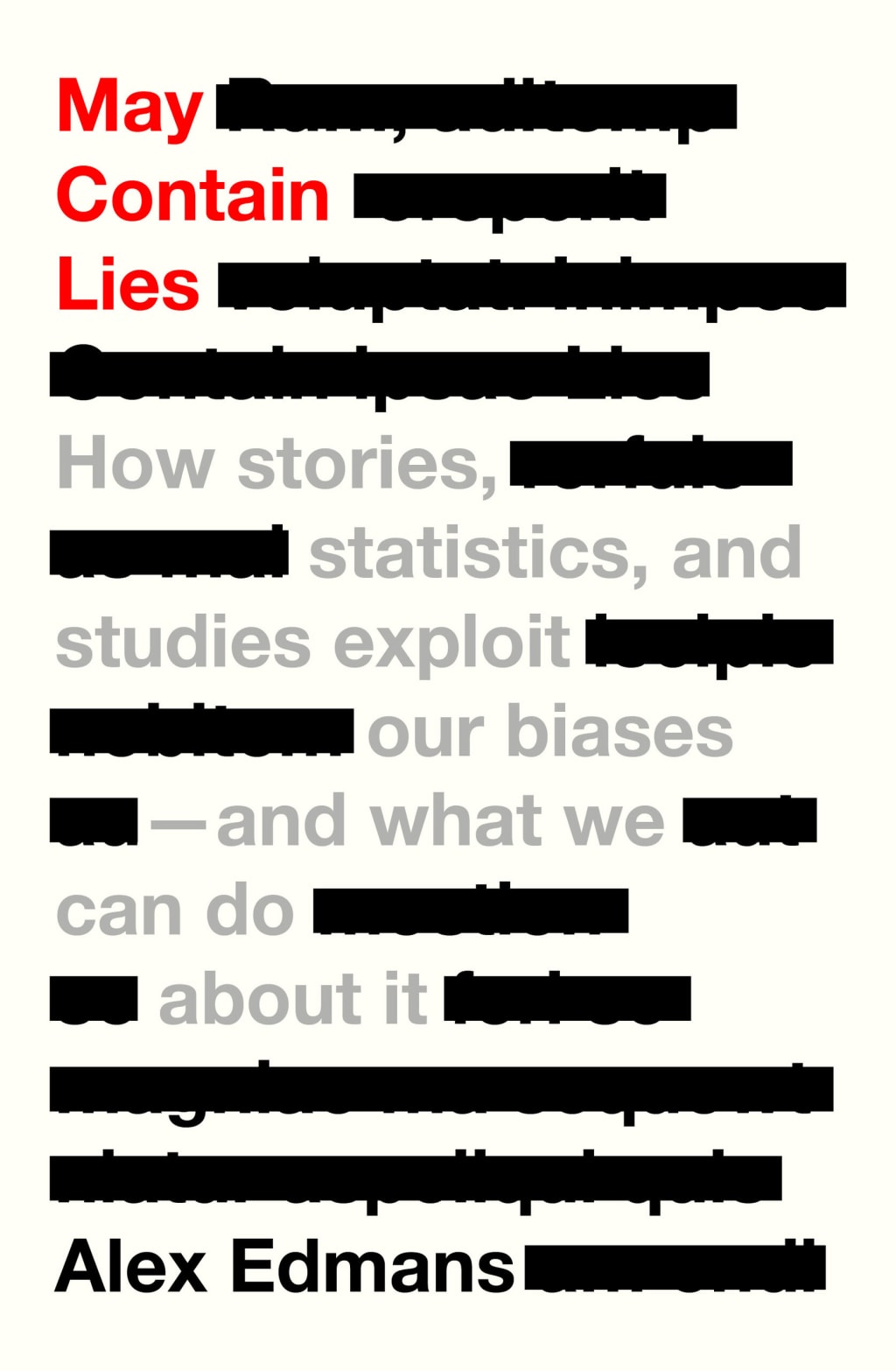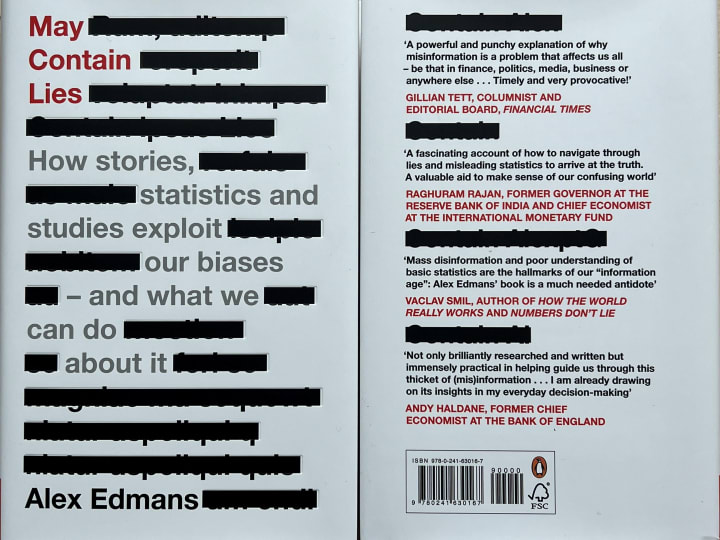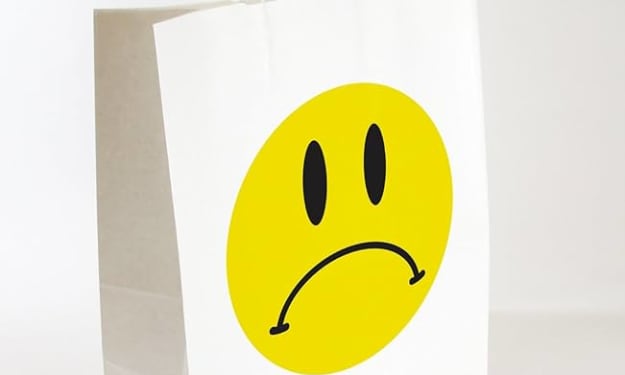Book Review: "May Contain Lies" by Alex Edmans
4/5 - an important book in a world of misinformation...

I've never really been too interested in reading about data and how statistics can be twisted to suit conclusions or even how our minds twist data to suit our conclusions. When I was younger, I learnt a lot about things like confirmation bias and the scientific method and I would later then use these things in university when conducting my own investigations into things. I can honestly say that this was not the motivation for me reading this book. In fact, I wasn't even remotely interested in reading it even when I bought it.
The reason why I read it was actually because maybe a year or so ago (it's probably more than that) I read a book called How to Lie with Statistics, recommended to me by my older brother. This book seemed like it would be a natural progression from that one. Though I will say that How to Lie with Statistics was a much better book than this - this book too, had its own good points.
The first thing I enjoyed about this book is the fact that the author takes time to teach us how the 10'000 hour rule is absolute rubbish. The rule is just this: apparently you can become an expert at something if you were to practice for 10'000 hours. The research for this is shaky at best and is only based on violinists. The author goes through the research and pokes holes in it, applying it to a real life problem in which someone (a golf player) was massively impacted. This particular golf player dropped his job and invested all of his money into becoming better at golf, wanting to perform at a professional level, he took to the 10'000 hour rule. He ended up getting better and better, but then severely injured himself to the point of no return and thus, after quitting his job and losing all of his money - could no longer play golf and could no longer do anything else either.
The application to a real life problem which could potentially impact thousands of people who believe the 10'000 hour rule is one of the high points of this book. I found it interesting to see how detrimental to health and wellbeing some misquoted, shaky research could be.
"Doubt the side of a bus is a source of information"
- May Contain Lies by Alex Edmans
I also enjoyed the story of a man who was exonerated of a crime he had been in jail for over 20 years for apparently committing. Edmans goes through the story, showing us where the detective who investigated the crime showed obvious signs of confirmation bias which allegedly, caused the police to cut corners when providing hardened evidence. This overflowed into the court room and put a man in jail for more than two decades. When reopened, the case was proven shaky at best and the hardened evidence did not support the claim that this man in jail was the culprit. In fact, it actually supported the opposite. He was completely innocent of any wrongdoing.
Using something as shocking as this to explain confirmation bias is another one of the book's advantages as it sheds light on how even the people tasked with investigating crimes and protecting people can be guilty of confirmation bias - believing what they want to believe and fixing the information they have to confirm that belief regardless of the collection of evidence or even reading it.

When going through May Contain Lies, we also get to learn about how two people who hold differing beliefs can read the exact same research study and come to differing conclusions about it, even when the evidence in the study remains a constant. People want to confirm their own biases and so, they only see what they want to see rather than seeing the bigger picture. The author, in the final section of the book, helps the reader to overcome these. A valuable lesson in critical thinking, it is actually pretty well written for a book all about statistics, evidence and biases.
Another part I thought was insightful was when the author poked holes in the validity of some claims made in the book Why We Sleep by Matthew Walker. Now, if you've read my review of this book you will know that I kind of missed the trend boat and hopped on the text only this year, but the fact that I have read it makes me think a lot about how some of the evidence within the book was twisted to suit Walker's own conclusion. An act of reverse engineering a hypothesis via cutting off some of the data that doesn't agree with your thoughts and beliefs is something that is also discussed in the book but here, we can actually see it happening.
Data mining seems to be a buzzword these days and this is another one of the aspects of the book I quite enjoyed because of its relevance. This is where researchers do tons of studies and only use the ones that support their hypothesis. A form of confirmation bias which ritualistically ignores any evidence that doesn't support the researchers own conclusions to begin with. This can be considered another way of reverse engineering a hypothesis and makes me think of that line (it's probably by Oscar Wilde, I'm not sure) that even things that are true can be proven. Paradoxical yes, but it definitely applies when you look at data mining. When you're looking at data mining you probably won't notice in the research you are reading but, the author gives us some tips on what to look out for when it is happening before our eyes.

I think the only thing I didn't enjoy about this book is the fact it was covered in personal anecdotes which were sometimes bloated and unnecessary. The one about the formula or breast feeding could have been cut down by a lot. The writers propensity for writing about real life situations that involve himself is not great and he seems to go on for a long time with no real point. If there is anything this book needs improving it is the sheer length of those personal anecdotes for which the reader, if reading a book as this, does not care to read about.
The book goes through many other things as well, such as the problems with black-and-white thinking and how it can lead us to interpret data differently even when presented with the same data as someone with different viewpoints. How we emotionally select which data to process and which to ignore since some of the research either aligns or disaligns with our own biases.
The author also goes through multiple studies involving subjects like the death penalty and how people read about it based on their own personal biases and how they respond to the research. The more we look into some studies though, the more we find holes in them in which the researcher is trying to confirm a viewpoint they probably already held.
This is not misrepresentation for malice, but is most likely a subconscious decision of wanting something to be true and therefore, implicitly making it true. A form of confirmation bias - but again, not all confirmation bias is malicious and not all confirmation bias is created equal.
In conclusion, I found this book to be insightful, useful and a good tool to practice critical thinking with. If not for the personal anecdotes bloating the book, it would have scored itself a solid five. However, I will still stress the book's importance, especially in our growing world of misinformation.
About the Creator
Annie Kapur
200K+ Reads on Vocal.
Secondary English Teacher & Lecturer
🎓Literature & Writing (B.A)
🎓Film & Writing (M.A)
🎓Secondary English Education (PgDipEd) (QTS)
📍Birmingham, UK






Comments
There are no comments for this story
Be the first to respond and start the conversation.